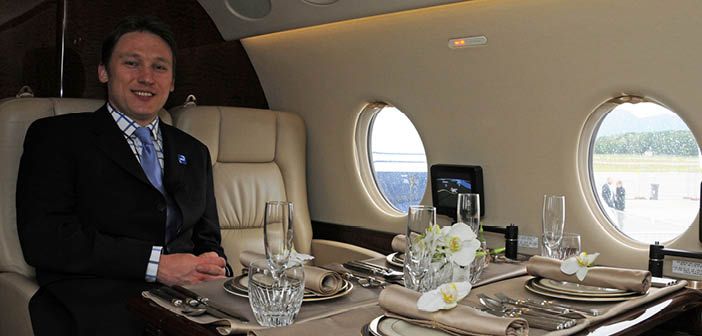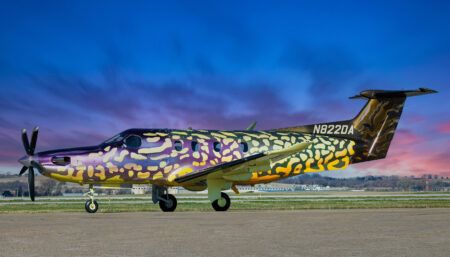Daniel Hulme, director of inflight catering at Alison Price on Air, explains some of the challenges involved
When was Alison Price on Air established and how has the company grown?
Alison Price on Air was established in May 2010 and has gone from having a couple of business jet aircraft operators on the books to a client list of more than 30 international operators, including leading companies such as Gama, Perfect Aviation and ExecuJet.
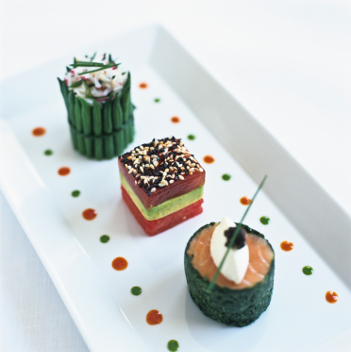 What are the biggest challenges involved in catering for business jets?
What are the biggest challenges involved in catering for business jets?
The biggest challenges often relate to timing and access to aircraft. Security is high at all airports so we have to factor this into the logistics of delivering aircraft food. We are also mindful of when our food requests arrive. If they come in after a certain time we would rather say no to the order than serve something that is not of our expected standard.
Last-minute orders can be a challenge too, and we will sometimes decline the request to protect our brand and ensure that the quality is of the level associated with Alison Price On Air. Cultural differences can sometimes present a challenge as expectations of how operations work change from nation to nation, so we always try to second-guess the client’s requirements.
How does the inflight environment affect the taste of the food?
Dehydration and altitude can affect the quality of the food and passengers’ tastebuds, but Alison Price on Air’s dishes are extremely considered and by making everything in-house we avoid these inherent problems, adapting dishes as required. We also consider how the food travels and the need to retain freshness. Our specially designed packaging plays an important part in keeping the food fresh. Breads don’t travel particularly well, so we have to make sure that the wrapping is particularly well sealed when food is travelling outside of our unique container system.
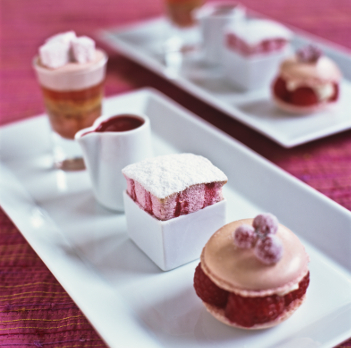 How do you ensure the food is suitable?
How do you ensure the food is suitable?
We work closely with the flight attendants to discuss each of their passengers’ specific requirements. We are aware of the differences between – for example – a Challenger 300 as opposed to a Challenger 850, which enables us to make suggestions about which food items will work and which won’t. Flight attendants also know what their customers like, so working n collaboration with them we can fulfil bespoke requests.
If you could, how would you change the design of aircraft galleys?
The biggest change we’d make is to develop a fridge, as galleys don’t tend to have them. A larger working area would also be advantageous. We’ve noted that some aircraft are very limited on storage, and while there’s lots of cabin space there are very few compartments in the galley. What is useful is when they have a microwave or oven and we always make sure we know what’s available so we can provide the best menu options to each aircraft.
How do you ensure flight attendants know how to prepare and serve the food correctly on board?
We offer flight attendant training days. These workshops provide basic culinary and modern food presentation skills and explain our unique flashcard system, which details how to present the food. The seminars also provide basic health and hygiene tips. Really we’re focusing on step-by-step guidance to food preparation so that what is served is how the chef intended the dish to be.
 How do you ensure the quality of the food is retained during transport?
How do you ensure the quality of the food is retained during transport?
We have designed our own packaging system, which ensures that the food is wrapped in such a way as to minimise the amount of handling the flight attendants need to make to serve the meals. The clever containers, the flashcard system, instructions and carefully produced dishes go a long way to ensuring that the food quality is retained during transport to the airport and in flight. Vans are refrigerated of course, as it’s a legal requirement, but our own packaging supports the food’s transit.
How much notice do you need?
Catering requests are normally sent to us before 19:00 for provision the next day. We tend to stick to this to make sure we provide the quality our clients now expect. We can do small orders in a shorter time, but from a restricted menu – we’re not about speed of delivery, but focus on quality of product.
What has Alison Price on Air done to ease access at airports?
This year we’ve invested big sums in gaining security clearance at the key London business aviation airports. Our staff have been security cleared, as have our vans. It was a six-month process to get to the point where we gained the full airside security access we need, but it has been worth the effort to speed up deliveries.
What are the big trends in food right now?
We’re receiving increasing requests for Indian cuisine and consequently we have teamed up with Michelin-starred restaurant Tamarind to provide high-quality Indian dishes. Otherwise clients actually want quite classic dishes, done at a superior standard and in a modern way. For example, our Caesar and Nicoise salads, are very popular, and have a really contemporary feel. Our most unusual request was for fresh eel, which we did manage to source and prepare as the client liked.
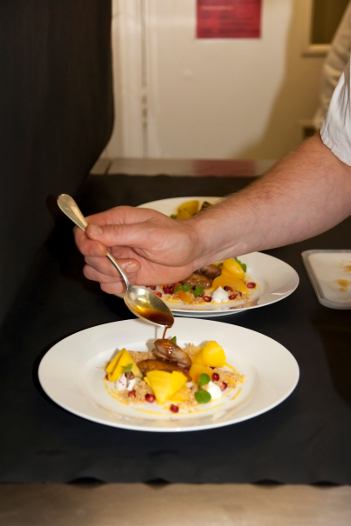 How do you plan to deal with increased demand surrounding the London 2012 Olympic Games?
How do you plan to deal with increased demand surrounding the London 2012 Olympic Games?
We are already in discussions with the main airports about how we plan to manage business during the Games. At this point we’re exploring all opportunities, including midnight deliveries and specific Olympics menus. In theory, with the strict slot allocation system in place, flight attendants and crew should be providing orders well in advance, which will be an unusual, but beneficial point for us.
What are the company’s plans for the future?
We are continually focused on improving our offering and of course expanding our client database. We’ve just taken on extra staff this summer, which enables us to open for longer. More themed menus partnering with the right restaurants are also looking likely. We’d also like to explore how we can influence galley design to make life easier for everybody. Following our successful first 18 months we’ve been asked to consult on a variety of business aviation catering issues and continue to develop this revenue stream.
What would your personal dream inflight menu consist of?
Sushi and champagne would be very high on the list!


